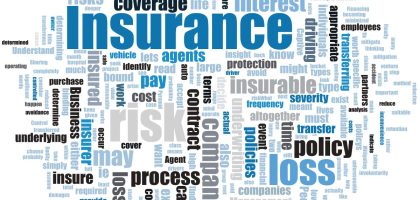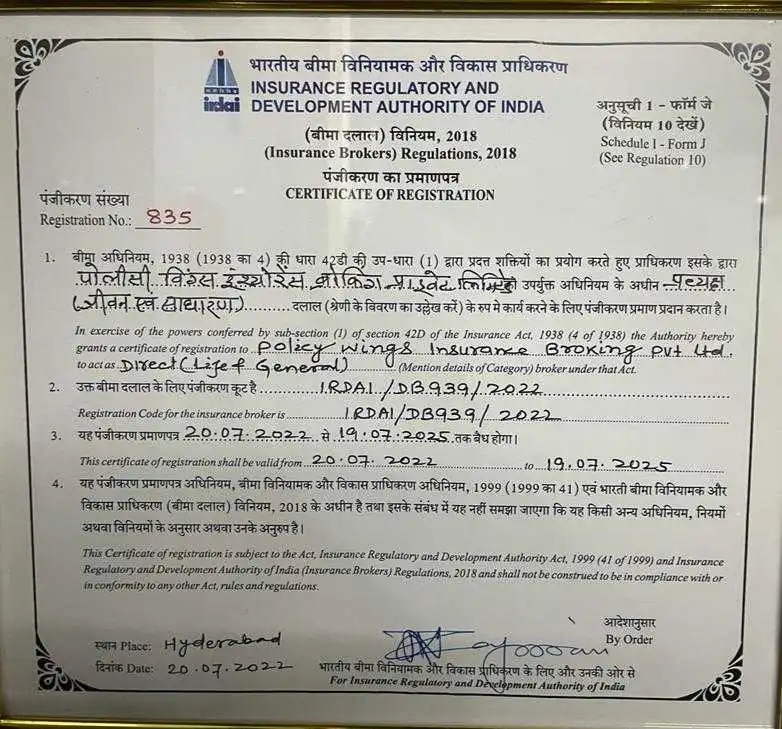Term Insurance
Term Insurance/Life Insurance Term Plan
Term insurance or we can say it a life insurance term plan is a vital component of financial planning that provides a safety net for your loved ones in the event of your untimely demise. In this comprehensive guide, we will explore the different types of term insurance, offer tips for choosing the right plan, discuss key features, highlight the advantages, and present the top 10 term insurance companies in India.
What is a Life Insurance Term Plan?
A life insurance term plan is a type of life insurance that offers coverage for a specific period, known as the policy term. It provides a death benefit to the beneficiary if the insured passes away during the term of the policy. Unlike permanent term life insurance policies, term insurance does not accumulate cash value.
What are the types of Term Insurance?
There are several types of term insurance plans available in the market. Understanding the differences between them can help you choose the right one for your specific needs.

Term Life Insurance Policy is among the country’s most popular life insurance plans. As the name suggests, you receive life insurance coverage for a period of time – “term”. This term usually covers 10, 20, 30 or even more years. The premium amount of these plans increases with the number of years covered under this policy. If you pass away unexpectedly, your nominees will be paid an 8-figure death benefit.

In contrast to its counterpart, Term Life Insurance with Return of Premium is a form of term life insurance plan that provides maturity benefits. You may get coverage for up to 20 years or more, and you will get the premium sum if you live out the policy period. The candidates specified on the insurance are provided death benefits if something tragic happens to them.

Whole life insurance plans, sometimes referred to as traditional full term life insurance policies, provide a death benefit for the duration of the policyholder’s life. Whole life insurance policies are specially designed life insurance products that aim to provide the insured with entire life coverage so they may lead a financially secure life and provide a backup net in the case of sudden death.

Endowment life insurance plans offer the policyholder a unique solution of both insurance and savings. In addition to the regular life coverage, these life insurance policies also enable regular savings over time in order to get a lump payment at the time of maturity.
Choosing the Best Term Insurance Plan
Choosing the best term insurance plan is crucial to ensure adequate coverage and financial protection for your loved ones. Here are some factors to consider when making this important decision:
- Assessing your needs : Evaluate your financial responsibilities and determine the coverage amount needed to support your family in your absence. Consider factors such as outstanding debts, future expenses, and income replacement.
- Coverage amount : Select a coverage amount that provides sufficient financial support for your family’s needs. It should consider factors like daily expenses, outstanding loans, education expenses, and any other financial obligations you want to cover.
- Policy duration : Decide on the duration of the term insurance policy based on your financial goals and responsibilities. Consider factors like the age of your dependents, mortgage duration, and the number of years until retirement.
- Premium payment options : Choose a premium payment option that suits your financial capability. Options include annual, semi-annual, quarterly, or monthly payments. Determine what works best for your budget and ensure timely payments to keep the policy active.
- Riders and add-ons : Explore additional benefits and riders offered by insurance companies. These may include critical illness riders, accidental death benefit riders, or waiver of premium riders. Assess your needs and consider adding riders that enhance the policy’s coverage.
Key Features of the Best Term Insurance Plan
Understanding the key features of the best term insurance plan will help you make an informed decision when selecting a policy. Here are some essential features to consider:
Death benefit: Term insurance provides a death benefit to the beneficiary if the insured passes away during the policy term. The death benefit is the coverage amount specified in the policy and serves as financial protection for your loved ones..
PR Policy term : The policy term is the duration for which the policy provides coverage. It can range from 5 to 40 years or more, depending on the insurance company and the policy selected.
Premiums :Term insurance premiums can be level or increasing. Level premiums remain constant throughout the policy term, while increasing premiums may rise over time. Choose a premium structure that aligns with your budget and long-term financial goals.
Advantages of Term Insurance
Term insurance offers numerous advantages that make it a popular choice among individuals seeking financial protection for their families. Consider the following benefits of term insurance:
- Affordability : Term insurance is generally more affordable compared to permanent term life insurance policies. The premiums are lower, allowing you to secure a higher coverage amount within your budget.
- Financial protection : Term insurance provides a significant death benefit to your beneficiaries, ensuring they have financial stability and can maintain their standard of living even after your demise.
- Flexibility : Term insurance offers flexibility in terms of policy duration and coverage amount. You can customize the policy to align with your specific needs and adjust it as your circumstances change.
- Tax benefits : Premiums paid towards term insurance are eligible for tax deductions under Section 80C of the Income Tax Act, providing additional financial relief.
- Peace of mind : Premiums paid towards term insurance are eligible for tax deductions under Section 80C of the Income Tax Act, providing additional financial relief.
Reasons to Buy Term Insurance in 2023
As we step into 2023, there are several compelling reasons to consider purchasing term insurance. Here are some key factors to keep in mind:
- Uncertain times : The future is unpredictable, and having term insurance ensures that your family is protected against financial uncertainties and unexpected events.
- Rising healthcare costs : With the escalating costs of medical treatments and healthcare services, term insurance can provide a crucial financial cushion to cover medical expenses in case of a critical illness or unforeseen medical emergencies.
- Protecting your loved ones : Term insurance acts as a safety net for your loved ones, ensuring that they can maintain their quality of life and meet their financial obligations even if you are no longer there to support them.
- Financial planning : Term insurance is an essential tool for effective financial planning. It helps you create a comprehensive financial strategy that includes protection for your family’s future and long-term financial goals.
Top 10 Term Insurance Companies
When choosing a term insurance plan, it’s important to consider the reputation and reliability of the insurance company. Here is a list of the top 10 term insurance companies in India:
- LIC (Life Insurance Corporation of India) : Tata AIG is a leading insurance provider offering comprehensive home insurance plans with a wide range of coverage options.
- HDFC Life Insurance : ICICI Lombard provides robust home insurance policies that cater to the specific needs of homeowners, ensuring financial protection and peace of mind.
- ICICI Prudential Life Insurance : Bajaj Allianz is known for its diverse home insurance offerings, including coverage for both building and contents, tailored to suit different requirements.
- SBI Life Insurance : HDFC ERGO offers comprehensive home insurance plans that provide coverage against perils such as fire, theft, natural disasters, and more.
- Max Life Insurance : Reliance General Insurance provides reliable home insurance policies that offer comprehensive protection for your property and personal belongings.
- Bajaj Allianz Life Insurance : SBI General Insurance offers a range of home insurance solutions with customizable coverage options, ensuring the safety of your home and assets.
- Tata AIA Life Insurance : New India Assurance is a trusted insurance provider that offers comprehensive home insurance coverage to safeguard your property and belongings.
- Kotak Mahindra Life Insurance : National Insurance Company provides home insurance policies that cater to the unique needs of homeowners, offering financial protection and peace of mind.
- Aditya Birla Sun Life Insurance : United India Insurance offers reliable and affordable home insurance plans, providing coverage against various risks and perils.
- Exide Life Insurance : Oriental Insurance Company provides comprehensive home insurance policies with a focus on customer satisfaction and tailored coverage options
Term insurance is an essential financial tool that provides much-needed protection and peace of mind for you and your loved ones. By understanding the different types of term insurance, choosing the right plan, and considering key features, you can ensure that your family’s financial future is secure. With the uncertainties of the future and rising expenses, 2023 is the perfect time to invest in term insurance. Take the necessary steps to protect your loved ones and provide them with the financial stability they deserve
Leading Life Insurance Companies
Latest Blogs
Introduction Even before a startup starts making money, India is crucial. Getting the proper insurance early on can mean the difference between an Indian startup’s survival and downfall. Insurers frequently view pre revenue businesses as high risk in India’s thriving startup ecosystem. However, putting off insurance until a business is profitable can leave startups vulnerable to disastrous legal, operational, financial, and reputational risks. It is not only wise, but essential, to approach insurance from the outset with a strategic, legally informed approach. Legal and Regulatory Requirements A growing number of Indian laws and regulations must be negotiated by even fledgling startups. For example, you must have worker’s compensation or similar statutory coverage if you have employees; failing to do so may result in fines and harm the reputation of your business. The Insurance Regulatory and Development Authority of India (IRDAI), which establishes standards for insurer’s solvency, products, and licensing, regulates the Insurance Act of 1938, which governs the Indian insurance industry. The nature of contemporary businesses frequently makes such coverage essential, even though there is no law that requires startups to carry, say, professional indemnity or cyber insurance. Early stage startups can maintain compliance with mandatory standards and strengthen governance by obtaining the right insurance, which can be crucial when dealing with partners, investors, or regulators. Risk Prevention: From Liability to Cyber Threats Numerous risks confront startups, some of which are evident and many of which do not: Businesses are protected from lawsuits resulting from property damage, personal injury, or mistakes in professional services by general liability and professional indemnity insurance. As more Indian startups become victims of cyberattacks, cyberinsurance is essential; however, only about 10% of them have it, compared to much higher rates overseas. This is obviously urgent given the 261% increase in cyberattacks in early 2024. About 5% of Indian startups have Directors and Officers (D&O) insurance, which shields executives from personal liability resulting from poor governance or strategic decisions. Startups that manufacture or sell goods must have product liability insurance to guard against lawsuits relating to flaws in their products. The founders themselves bear the financial and reputational burden before they receive a single rupee of revenue if these new and established risks are not addressed. Business Continuity & Financial Resilience The delicate operations of a startup can be destroyed by unforeseen circumstances like fires, theft, legal action, or cyberattacks. Litigation expenses or property damage can deplete limited funds. By providing continuity and facilitating recovery rather than collapse, insurance acts as a safety net. Only 20 to 30% of Indian startups purchase insurance, which is significantly less than that of established markets. This exposes most endeavours to danger. Strategic Advantage, Investor Confidence, and Credibility Startups with strict risk management are sought after by investors and clients. Having insurance shows professionalism and foresight. Additionally, insurance becomes particularly important for early stage businesses looking to grow or draw in outside funding. Packages combining professional indemnity, cyber, D&O, and property coverage essential components for scaling safely can be customised by insurers and brokers. Benefits like tax exemptions and expedited IP filings are offered by government programs and Startup India recognition, but they cannot replace insurance. Nonetheless, under these frameworks, having insurance knowledge increases credibility. India’s Insurtech, Innovation, and Access Startup’s access to coverage is being revolutionised by India’s Insurtech wave. Founders can quickly compare and purchase policies thanks to some platforms that combine UPI, embedded insurance, and mobile delivery. Because of this flexibility, startups can obtain insurance even before they start making money, frequently for a small upfront fee. This kind of digital access fits with the startup mentality: quick, adaptable, and economical security. Beyond Protection, Strategic Advantages Cost effectiveness: Personalised policies eliminate uncertainty and are frequently less expensive to adopt early than crisis driven coverage. Innovation boost: Knowing that unexpected claims won’t derail startups gives them the confidence to try new things. Attracting employees: Providing group health insurance or an insured workspace boosts morale and talent. Regulatory ease: Insurance promotes more seamless audits and due diligence while assisting in avoiding legal pitfalls, particularly in relation to employee or contract disputes. Legal Precedents & Case Insights While India lacks many high profile startup insurance rulings, basic legal frameworks still apply. Cases around professional negligence or data leaks show courts hold business owners (including founders) personally liable if negligent. Insurance serves both as protection and a demonstration of diligence. Similarly, under the Companies Act and Indian Penal Code (Sections like IPC 405 on breach of trust), founders must act responsibly. Insurance can support compliance efforts and reduce legal vulnerability. Conclusion Startup insurance is available even before your business makes a dime. India is fundamental, not optional. Starting early for early stage startup insurance guarantees: Observance of the law Defence against new dangers (liability, cyber, D&O) Continuity of business Credibility with clients and investors Availability of cutting edge Insurtech tools A venue for unafraid expansion and creativity Treating insurance as a strategic asset rather than a cost can make the difference between surviving and thriving as founders in India’s rapidly expanding but fiercely competitive ecosystem.
...Introduction Liability insurance India and business insurance claims are more than just catchphrases; they have the power to determine whether a business endures or fails in the face of financial or legal danger. Lack of proper liability insurance can have disastrous consequences in India’s changing regulatory environment, ranging from harsh tribunals to astounding compensations. Why Liability Insurance Is Non-Negotiable in India Regardless of whether the insured is at fault, liability insurance serves as a financial buffer for companies by paying for court awarded damages, settlements, and legal fees resulting from accidents, property damage, or carelessness. In cases involving hazardous activities, the Indian legal system also enforces strictures like absolute liability, which eliminates the use of defences like mistake, third party fault, or force majeure. The risks are just too great for companies that participate in or support risky activities to be uninsured. Real Life Illustrations: What Happens Without Coverage Medical Career Errors Revealed An X-ray report from a doctor in Ghaziabad was filled with mistakes, including incorrect gender, age, referral date, and referring physician information. The doctor and her insurer, New India Assurance, were ordered to pay INR 20,000 in compensation and litigation costs each by the District Consumer Disputes Redressal Commission (DCDRC), which declared it a “deficiency in service”. The entire financial and reputational burden of liability would have fallen on the doctor alone if she had not had insurance. Insurance Boundary Bend: A Transporter’s Nightmare Four days prior to the expiration of the insurance policy, a truck was stolen. The insurer claimed a settlement had already been reached and only paid INR 5.3 lakh. The DCDRC ordered the insurer to pay the INR 15,949 shortfall plus INR 5,000 for mental distress and required payment of 75% of the Insured Declared Value (IDV) based on Supreme Court precedent. The transporter would lose hundreds of thousands of rupees if they didn’t have insurance. Tragic Traffic Accident: Compensation for the Family Under Sections 279 and 304A of the IPC, the negligent tractor driver and Liberty General Insurance Co. shared liability for a fatal accident that occurred in Gurgaon in July 2020. The victim’s family was awarded INR 22.22 lakh plus 9% annual interest. The driver or worse, the victim’s family would be compelled to engage in a drawn-out, potentially fruitless legal battle in the absence of insurer involvement. A Billion Rupee Claim Is Awaiting in the Aviation Disaster Over 240 people were killed in the Air India Boeing 787 Dreamliner crash near Ahmedabad, which could result in insurance claims totalling more than INR 1,000 crore, which would be the largest aviation insurance payout in Indian history. Experts caution that both Boeing and Air India might be held “unlimited” liable under international aviation law, which would be far more than the usual policy limits, if negligence is proven. Corporate reserves would be dwarfed by the financial consequences of inadequate liability coverage. Legal & Regulatory Landscape: The Why Behind the What The Public Liability Insurance Act of 1991 requires operators of hazardous industries to carry public liability insurance. Policies pertaining to directors and officers (D&O), employer’s liability, product liability, professional indemnity, and cyber liability are becoming more and more important in a variety of sectors, including corporate governance, IT, healthcare, and manufacturing. The market for insurance is expanding quickly. Liability insurance premiums increased by almost 15% between 2013-14 and 2022-23, and INR 1,137 crore in claims were paid. Legal Strategy & Takeaways With the appropriate combination of sector-specific policies, such as public, professional, product, D&O, or cyber liability, you can avoid liability expenses. Legally anchored: Certain liability policies, like public liability, are statutory, so compliance is not optional. Others protect international collaborations, vendor contracts, and tender eligibility. Make good use of precedent: Even when procedural problems occur, expected payouts are guided by cases such as National Insurance Co. vs. Nitin Khandelwal. Catastrophic risk equals to uninsured exposure The financial and reputational harm is rarely contained, whether it is due to transport theft, industrial disasters, or professional errors. Conclusion: Liability insurance is more than just caution in India; It’s preservation. Every example, from court rulings to significant insurance claims, demonstrates how liability insurance in India is a lifeline rather than an expense. Accountability is strengthened by regulations, and actual court decisions demonstrate that not having insurance can lead to financial ruin. Liability coverage is not only wise, but necessary for businesses to succeed, particularly in high risk, regulated, or public facing industries.
...Since regulatory reforms are changing the landscape for business to business insurance, business insurance laws in India and business insurance compliance are at a critical juncture. In today’s dynamic Indian insurance ecosystem, corporate entities, insurance intermediaries, and risk managers must adhere to legal requirements, comprehend them, and implement best practices. Legal and Regulatory Framework The Insurance Act of 1938 and the IRDA Act of 1999, which together constitute the foundation of insurance regulation in India, are at the centre of the system. Foreign direct investment (FDI) restrictions have increased since liberalisation; in 2014, they went from 26% to 49%, and as of the 2021 amendment, they are now 74%. The Insurance Laws (Amendment) Bill, 2024, proposes further expansion towards 100% FDI. In order to conduct life, general, standalone health, or reinsurance business, insurance companies must be registered as public limited companies under the Companies Act. Each category requires a different registration certificate from IRDAI. Minimum capital thresholds of INR 1 billion for life, general, and health insurers, INR 2 billion for reinsurers, and INR 0.5 billion for reinsurance branches are among the main mandated requirements. Under the IRDAI’s Foreign Reinsurer Regulations, 2024, which include requirements like credit ratings, capital infusion, and home regulator clearance, foreign reinsurers are permitted to conduct business through registered branches. Entities operating in the International Financial Services Centre (IFSC) are required to register with the IFSCA as IFSC Insurance Offices (IIOs), fulfilling the regulatory and capital requirements specific to their home registrations. Notable 2024 25 Regulatory Reforms The goal of IRDAI’s recent principle based regulatory change is to strike a balance between innovation and compliance. It released unified rules in 2024 that addressed actuarial standards, policyholder protection, corporate governance, insurer registration, and online marketplaces. IRDAI unveiled new rules at the beginning of 2025: Regulatory Sandbox Regulations, 2025, which support inter regulatory sandbox proposals across financial sectors, are intended to spur innovation in insurance offerings. The 2025 Maintenance of Information Regulations require robust data governance, internal controls, and safe electronic record keeping. Regulations for the Meetings, Insurance Advisory, and Reinsurance Advisory Committees have been updated to improve governance flexibility and structure. A health insurance safety measure has a yearly premium cap of 10% for seniors 60 and older, with regulatory approval needed for any modifications. With effect from 1 April , 2026, ULIPs with yearly premiums exceeding INR 2.5 lakh will no longer be exempt from Section 10(10D) of the Income Tax Act. Instead, they will be subject to capital asset taxation, which levies 12.5% long term CG tax on equity oriented funds. Business Insurance Compliance and Practical Implications Strict adherence to capital norms, registration procedures, and governance standards is necessary for B2B insurance players to comply. According to IRDAI’s Registration Regulations, directors and other important managerial staff must fulfil standards related to their reputation and professionalism, including the lack of disciplinary actions. Before being issued, policies must be submitted to internal committees or IRDAI. Furthermore, access to Consumer Courts is unaffected, and policyholders have the legal right to contest claims under the Insurance Act even if the terms of the policy try to limit status. Importantly, after three years, insurers are unable to contest life insurance policies on grounds such as fraud, thereby enhancing insured protections. Although indemnity for directors and officers is allowed under the Companies Act of 2013, premiums are regarded as compensation in the event that misconduct is proven. A number of insurance types, including third party auto insurance, public liability insurance, employee state insurance, and aviation and marine carriage acts, are required by law. To avoid legal repercussions, corporations must assess relevant mandates in the context of their business. Insurance companies are subject to the PMLA 2002’s anti money laundering regime; to guarantee adherence to India’s AML regulations, due diligence, transaction monitoring, and reporting of suspicious activity must be properly executed. Best Practices for B2B Insurance Players Retain Regulatory Vigilance: To remain compliant and ahead of the curve, keep an eye on and execute IRDAI reforms, particularly the sandbox, data, and governance regulations. Invest in Digital Infrastructure and Governance: Board approved systems for risk reporting, data security, audits, and policy draughting guarantee efficiency and compliance. Put Policyholder Protection First: Openness in product design, senior premium caps, and equitable claims processing build confidence and minimise conflict. Leverage Innovation Safely: For experimental products, make use of regulatory sandbox mechanisms while maintaining consumer protections and compliance. As Bill 2024 suggests complete liberalisation, make sure business structures are in line with FDI restrictions and capital needs to support growth and collaborations. Integrate AML Protocols: To reduce legal and reputational risks, follow PMLA guidelines with strong KYC, transaction reviews, and reporting systems. Conclusion In 2025, liberalisation, digital reform, and principle based regulation will have transformed India’s business insurance laws. Compliance for business to business insurance companies encompasses not only following the law but also innovation, governance, and customer trust. Businesses can secure sustainable growth in India’s changing insurance ecosystem by navigating the regulatory landscape with agility and confidence by investing in strong frameworks, aligning operations with changing norms, and adjusting to new regulatory tools.
...Introduction A strong risk management plan must include both business interruption and loss of income insurance, which provide a safety net in case of unanticipated disruptions. Whether brought on by supply chain disruptions, legal closures, cyberattacks, or natural disasters, this coverage shields businesses from revenue loss and keeps things stable while they recover. Understanding Business Interruption Insurance When operations are halted because of covered events, business interruption insurance reimburses a company for lost revenue and additional costs. Standalone policies concentrate exclusively on the financial effects of operational stoppages, even though they are frequently an addition to property insurance. Usually covered are: Replacement of Gross Income: Makes up for money lost during the disruption. Payroll, utilities, and rent are examples of continuous commitments that are supported by fixed cost coverage. Extra Expense Coverage: Provides coverage for extra expenses (such as temporary relocation and emergency services) required to resume operations more quickly. This policy is income dependent, which means that the indemnity is correlated with actual business losses and necessary expenses, in contrast to other insurance types that pay fixed benefits. Legal and Regulatory Context in India Regulatory frameworks highlight the significance of business interruption insurance in industries such as banking, healthcare, and critical infrastructure, despite the fact that it is not required in India. The terms and issuance of such policies are governed by the Insurance Act of 1938 and IRDAI guidelines, which guarantee coverage standards and claims procedures. Furthermore, the principles of indemnity and loss mitigation are applicable under Sections 73 and 74 of the Indian Contract Act, 1872. Policyholders are required to minimise losses, properly document claims, and refrain from taking risks following a covered event. Why Companies Often Underestimate Its Importance When business stops, organisations usually concentrate on protecting their physical assets while ignoring the hidden financial strain. Long periods of downtime, however, can quickly deplete reserves and result in financial difficulties, supplier default, or even insolvency. This gap is filled by business interruption coverage, which aids in preserving liquidity during crucial times. Real World Lessons That Emphasize Its Value Natural Disasters: Businesses without this coverage frequently find themselves unable to cover operating costs in areas hit by earthquakes or floods, which can result in bankruptcy even if physical damage is repaired. Cyber and Systems Failures: Operations can be swiftly shut down by a ransomware attack or an extended IT outage. Such occurrences are usually not covered by standard property policies, which emphasises the necessity of specific interruption coverage catered to digital risks. Regulatory Shutdowns: Government mandated closures, like lockdowns for health emergencies or halts for environmental compliance, can severely reduce revenue. Companies with interruption insurance are better equipped to withstand mandated outages. Two startling facts emerge from these situations: insurance terms need to be exactly in line with business realities, and not having coverage is not just dangerous, it could be disastrous. Policy Design: Legal Considerations and Best Practices Clearly Define the Covered Events Cyberattacks, pandemic closures, and civil unrest may not be covered by standard policies. Indian companies are required to evaluate their risks and negotiate extensions, particularly with regard to “non-damage business interruption”, which refers to risks that do not entail physical harm. Establish Sufficient Coverage Duration Usually, indemnity periods last between 30 and 90 days, but more extensive coverage may be needed for complex recovery operations like facility reconstruction or data restoration. Businesses should negotiate adequate “extended indemnity periods” in accordance with industry standards and risk assessments. Make Sure Your Revenue Estimate Is Correct In order to determine lost income, insurers frequently need historical financial data. To substantiate claims and prevent disagreements, accurate documentation is crucial, including daily sales records, supplier contracts, and cost structures. Awareness of Exclusion Losses brought on by underinsurance, government action, or postponed maintenance may be excluded by many policies. To prevent rejection, legal teams should carefully review the terms, offer advice on any coverage gaps, and make sure that claims are started on time. Restore and Reduce Policyholders are required to take reasonable measures to quickly resume operations, such as using alternate locations, rerouting supply chains, or implementing temporary workarounds. Under Section 73 of the Indian Contract Act, courts have the authority to reject claims in cases where the loss could have been reasonably mitigated. The Financial Significance of Business Interruption Coverage Cash Flow Stabilisation: Even during extended pauses, the indemnity guarantees that operational commitments such as rent, loan repayments, and salaries are fulfilled. Stakeholder Assurance: Providing coverage to show resilience instills trust in lenders, suppliers, customers, and investors. Competitive Advantage After a Crisis: Companies that can bounce back fast tend to gain market share, recover more quickly, and come out stronger than their peers without insurance. Sector Specific Considerations Manufacturing and exporters should evaluate supply chain vulnerabilities and make sure that unreported losses aren’t caused by delayed shipments or damaged infrastructure. Retail and hospitality may experience abrupt declines in foot traffic or be forced to close. Continuity is ensured by coverage specific to business or physical interruption. IT and Digital Services: Data breach and digital downtime coverage are becoming more and more essential as cyber threats increase. Global Precedent: Singapore’s Circuit Breaker Case Businesses with “non-damage business interruption” policies were able to successfully claim losses even in the absence of physical damage during Singapore’s strict COVID-19 “circuit breaker” restrictions, while many others with inadequate wording were not covered. This demonstrates how the wording of policies can make or break indemnity outcomes in disruptions caused by the government. Conclusion Even though they are frequently disregarded, business interruption and loss of income insurance can literally mean the difference between surviving and failing when operations are interrupted. This coverage serves as a strategic shield, preserving long term resilience, preserving solvency, and safeguarding reputation. Companies can turn an insurance clause into a lifeline by carefully matching the policy wording with your business risks, making sure that the right paperwork is in place, negotiating suitable indemnity periods, and proactively managing loss.
...Introduction D&O coverage Director’s liability insurances are no longer specialised business tools; rather, they are crucial defences for business executives in the high-risk business world of today. This insurance has become a crucial protection against personal financial exposure resulting from managerial decisions, alleged misconduct, or regulatory scrutiny, as the Companies Act of 2013 places strict fiduciary duties and liabilities on directors and officers. Understanding D&O Insurance in the Indian Context Directors and Officers Liability Insurance protects company directors, important officers, and occasionally the organisation itself against lawsuits stemming from wrongdoing while performing their jobs. Errors, omissions, misstatements, duty breaches, carelessness, or deceptive statements can all be considered wrongdoing. Policies in the Indian market are divided into three categories: Side A: Provides protection for individual officers and directors in the event that the business is unable to pay them. Side B: Pays back the business when it pays officers and directors. Side C: Provides coverage for the entity itself, frequently in cases involving securities. Legal Framework Behind Director’s Liabilities The statutory duties of directors are outlined in the Companies Act of 2013. Fiduciary duties are codified in Section 166, which mandates that directors avoid conflicts of interest, act in good faith, and exercise due and reasonable care. Independent directors may also be held accountable for actions taken with their knowledge, consent, or carelessness, according to Section 149(12). The code of conduct for independent directors is reinforced in Schedule IV. Liabilities may result from provisions of the Securities and Exchange Board of India (SEBI), the Insolvency and Bankruptcy Code (IBC), labour laws, environmental laws, and other sector-specific regulations in addition to company law. Why It’s Not Mandatory But Still Important In India, D&O insurance is not required by law. However, the lack of coverage can expose company executives to debilitating legal expenses and personal asset risk in a business environment where litigation, shareholder activism, and regulatory oversight are escalating. Long, costly legal battles can result from even unfounded accusations, and defence expenses alone can be high. Indian Case Studies That Shaped the Importance of D&O Insurance 1. Satyam Computers Scandal (2009): Directors were subject to legal actions and investor lawsuits after significant financial irregularities were revealed. Many found that fraud or deliberate misconduct was not covered by their insurance, underscoring the significance of comprehending policy exclusions. IL&FS Financial Collapse (2018): Several investor and regulatory actions were prompted by a debt default exceeding ₹90,000 crore. Directors were subjected to thorough investigations, illustrating how insufficient policy limits can result in protection gaps. Kingfisher Airlines Case: Directors still faced significant defence expenses, some of which were covered until proven guilty, even though D&O policies typically forbid wilful misconduct. This demonstrated the short-term benefits of defence cost coverage. These examples underline two truths: A sign of sound corporate governance is D&O insurance. Just as important as having the policy itself are its exclusions, scope, and claim procedures. Regulatory and Governance Drivers Under the 1938 Insurance Act, D&O policy issuance is regulated by the Insurance Regulatory and Development Authority of India (IRDAI). In order to draw in top-tier leadership, listed companies are compelled by SEBI and stock exchange corporate governance standards to implement more robust director protection measures. Additionally, companies may purchase liability insurance for their directors and officers under Section 197(13) of the Companies Act, 2013, with the exception of cases involving fraud, breach of trust, or wilful default. Important Exclusions Businesses Need to Know Although policies are customisable, common exclusions include: Wilful non-compliance, criminal activity, or fraud. Illegally obtained personal gain or advantage. Property damage or bodily harm (unless it results indirectly from managerial choices) Claims resulting from known past events that were not revealed at the start of the policy. Crucially, until a final decision proves fraud or criminality, many policies will continue to pay defence expenses. Practical Guidance for Indian Companies Evaluate Your Risk Profile: Coverage levels should be determined by your industry, market exposure, investor base, and regulatory environment. Higher cover limits are frequently needed for listed companies, financial services, and pharmaceuticals. Make Sure There Are Sufficient Limits and Extensions: Take into account extensions like cyber liability, employment practices liability, or coverage for retired directors. Make Claim Notification Procedures Clear: It’s critical to report claims and possible situations as soon as possible. Delays may result in coverage being denied. Cost and Coverage Quality: Although premiums are deductible under the Income Tax Act as business expenses, insufficient coverage may end up costing much more in the long run. Inform the Stakeholders: By revealing the presence of strong D&O insurance, one can increase investor trust and draw in qualified directors who might otherwise be wary of personal liability. Learning from International Jurisprudence A warning precedent was set in the 1985 U.S. case Smith v. Van Gorkom, in which directors were held personally accountable for approving a merger without sufficient information, even though they had acted in good faith. These decisions serve as a reminder that carelessness, even in the absence of malice, can result in legal consequences. Global corporate accountability standards are becoming more and more in line with Indian judicial trends. The Strategic Imperative D&O insurance India is more than just a financial safety net in a market that is competitive and heavily reliant on compliance; it is a leader’s enabler. It safeguards private assets, pays for high legal fees, and lets shareholders know that the business values accountability and governance. Even if they are ultimately found not liable, directors who do not have this coverage run the risk of experiencing personal financial ruin due to litigation costs. On the other hand, decision-makers can be protected by a well-crafted directors liability insurance policy, which frees them from the crippling fear of being exposed personally. Conclusion Director’s liability insurance is a governance requirement for Indian businesses, whether they are listed corporations with intricate stakeholder structures, mid-sized businesses expanding operations, or startups drawing venture capital. In a time when accountability is strict and personal liability is real, organisations can give their leaders the confidence
...Introduction Insurance for Cyber liability in India are now crucial components of business resilience rather than optional extras. Indian businesses need to protect themselves with proactive risk coverage as digital transformation picks up speed across industries. India’s legal system has developed quickly. Section 43A of the Information Technology Act of 2000 requires that any organisation that handles sensitive personal data put in place “reasonable security practices and procedures”, failing which it may be held legally liable. These requirements, which are further explained by the 2011 Rules under the same Act, include standards for data collection, disclosure, and privacy policies. To strengthen citizen’s data rights, India passed the historic Digital Personal Data Protection Act, 2023 (DPDP Act) in 2023. The appointment of Data Protection Officers, impact assessments, and fiduciary classification are now proposed in the Draft DPDP Rules, 2025, which were published in January of that year. This represents a significant operational change for businesses handling personal data. A tightening of regulatory oversight is indicated by the government’s implementation of e-Zero FIR for cybercrime reporting and SEBI’s requirement that listed companies disclose cybersecurity incidents on a quarterly basis. Insurance regulations are catching up, though, as the sector regulator, the Insurance Regulatory and Development Authority of India (IRDAI), released its Information & Cyber Security Guidelines, 2023, which went into effect on March 24, 2025. According to these guidelines, insurers and intermediaries must comply with India’s NTP for logs, maintain six months of ICT log data, report cyber incidents to IRDAI and CERT-In within six hours, and have a Cyber Crisis Preparedness Plan with outside forensic experts hired beforehand. Why this matters for Indian companies: Legal Exposure and Regulatory Requirements Financial penalties, legal liability, or reputational harm may result from noncompliance with DPDP mandates or IT Act security obligations. Exposures such as fines, litigation, forensic expenses, and breach notifications are reduced by a cyber liability policy. Changing Cyberthreat Environment In 2024 alone, there were reportedly close to 370 million malware and cyberattack incidents in India, with BFSI sectors being the most commonly targeted. The financial vulnerability is highlighted by the fact that the average cost of a data breach can reach crores. Gap in Coverage for Losses to First and Third Parties In India, cyber insurance now frequently covers both third-party liabilities, such as legal fees, fines from the government, and damage to one’s reputation, as well as first-party losses, such as data restoration, business interruption, and ransom payments. Promoting Best Practices During underwriting, insurers evaluate an organization’s security posture in accordance with the IT Act and DPDP. In addition to improving cybersecurity, certifications like ISO 27001, ISO 27701, or SOC 2 can lower premiums. Operational discipline and governance By requiring insurers to implement more robust governance, IRDAI’s guidelines raise the bar for the entire industry and guarantee that younger firms only underwrite when risk preparedness and incident response are in place. Case Law Insight In the historic ruling in Justice K.S. Puttaswamy (Retd.) v. Union of India (2017), the Indian Supreme Court upheld the importance of protecting personal information as a fundamental right under Article 21. Cyber Risks in the Supply Chain and Third-Party Vendors Nowadays, companies hardly ever work alone. Vulnerabilities in cloud service providers, other supply chain partners, or outsourced IT providers are the root cause of many breaches in India. Companies are still legally liable for data breaches brought on by outside service providers handling their data under the DPDP Act and IT Act. Cyber insurance is essential for industries that heavily rely on vendor ecosystems, such as manufacturing, IT/ITeS, fintech, and e-commerce. It can cover investigation costs, breach notifications, contract dispute resolutions, and multi-party litigation. Real World Implementation: Best Practices for Indian Companies Conduct a cyber risk assessment in accordance with the IT Act and DPDP guidelines. To improve compliance posture and lower insurance costs, get ISO or SOC certifications. Assign a Data Protection Officer (DPO) and get ready for the upcoming DPDP Rules regulatory requirements. Obtain a thorough cyber liability policy that addresses third-party risks (legal, regulatory penalties, PR) as well as first-party risks (forensics, business interruption, ransom, and data restoration). As mandated by IRDAI, guarantee incident response preparedness, including log retention, forensic expert panels, and board-level supervision. Review and test incident response plans, insurance adequacy, and cyber risk management on a regular basis. In 2025, cyber insurance India is much more than just a safety net, it’s a strategic necessity as the country’s digital and regulatory landscape changes. A strong cyber liability policy that complies with DPDP requirements, IT Act standards, and IRDAI’s crisis management guidelines enables businesses to control legal risks, maintain business continuity, and protect stakeholder trust. Indian businesses will be stronger, more resilient, and prepared for the future if they invest in cyber readiness now, not just through technology but also through governance and policy.
...Introduction In 2025, business insurance will be a vital component of sustainable growth for Indian SMEs. Due to increased operational risks, more stringent compliance requirements, and an unstable economic climate, SME insurance is now a necessity for both legal compliance and business continuity in India. India’s GDP and employment are greatly influenced by small and medium-sized businesses. However, operations may be severely hampered by their susceptibility to losses, whether from cyber incidents, employee injuries, lawsuits, or natural disasters. Financial protection and strategic resilience are offered by the appropriate insurance policies that are in line with Indian legal and regulatory frameworks. 1. Property and Fire Insurance For SMEs, safeguarding physical assets like buildings, machinery, stock, and equipment is the first line of defence. Damage from fire, explosions, storms, floods, riots, and burglaries is usually covered by property and fire insurance policies. Legal background: In accordance with the 1938 Insurance Act, all general insurance contracts in India are required to follow IRDAI regulations, guaranteeing that the terms of the policies satisfy legal requirements. To prevent disagreements over claim settlements, SMEs should make sure their policies contain the “Standard Fire and Special Perils” clause in accordance with regulatory standards. 2. Business Interruption Insurance Even if physical damage is fixed, a business may become unstable due to lost revenue during downtime. When a business is unable to function because of insured events such as fire, flood, or significant equipment failures, business interruption insurance covers fixed operating costs and makes up for lost profits. By guaranteeing that the insured is put back in the same financial situation as before the loss, this policy complies with the commercial principle of indemnity recognised by Indian contract law. 3. Liability Insurance (General and Professional) Years of profit can be lost due to a single liability claim. If a third party sustains physical harm, property damage, or financial loss as a result of your business operations, liability insurance will pay for the associated legal fees and damages. Professional liability insurance (errors and omissions coverage) is essential for service-based SMEs, while general liability insurance is essential for companies that deal with the public. The duty of care principle has been consistently upheld by Indian courts; tort law cases demonstrate that negligence can result in significant compensation awards even in the absence of contractual privity. 4. Worker’s Compensation and Employee Protection Eligible employers are required by the Employee’s State Insurance Act of 1948 to offer covered employees dependent, maternity, disability, and medical benefits. Many SMEs, however, are not covered by ESI or hire employees who don’t fit the requirements. Worker’s compensation insurance is crucial in these situations. Medical costs, disability benefits, and compensation for fatalities or injuries sustained on the job are all covered. Additionally, it lessens the possibility of legal action under the Employee’s Compensation Act, 1923, which is still applicable in some situations. 5. Cyber Liability Insurance SMEs are increasingly at risk from ransomware, phishing, hacking, and data breaches as digital adoption picks up speed. Costs associated with data recovery, business interruption brought on by cyberattacks, legal liabilities, and regulatory fines under new data protection laws in India are all covered by cyber liability insurance. Businesses that handle personal data will be subject to more stringent requirements under the upcoming Digital Personal Data Protection Act. In order to mitigate the financial and reputational harm caused by non-compliance or security breaches, cyber insurance will be essential. 6. Marine Cargo and Transit Insurance Loss or damage to goods during transit can put SMEs involved in manufacturing, distribution, or exporting under a lot of financial strain. Marine cargo and transit insurance protects products from risks like theft, natural disasters, and accidents while they are being transported by air, sea, rail, or road. The terms of a contract may determine a seller’s or buyer’s liability for goods during transit under the Indian Contract Act, 1872. Contractual obligations can be fulfilled without suffering financial loss thanks to transit insurance. The Marine Insurance Act, 1963, which codifies the principles of indemnity, insurable interest, and utmost good faith for goods in transit, governs marine cargo and transit insurance in India. This Act ensures SMEs can recover financial losses in accordance with statutory provisions by providing the legal framework for claims pertaining to loss, damage, or delay during transportation by road, rail, air, or sea. 7. Group Health and Personal Accident Insurance Productivity and retention are directly impacted by employee well-being. While group personal accident policies offer compensation for unintentional death or disability, group health insurance covers hospitalisation and medical expenses. Such policies, though not always required, assist SMEs in meeting changing labour welfare standards and boost employee morale, which lowers turnover and increases loyalty. What’s the Significance of These Policies in 2025 Adherence to Regulations SMEs need to make sure that their insurance policies comply with statutory benefit obligations, industry-specific compliance requirements, and IRDAI regulations. For instance, penalties, back payments, and legal action may follow noncompliance with laws requiring employee benefits. SMEs have Low Insurance Penetration Less than 10% of Indian SMEs have sufficient insurance coverage, despite their significant economic impact. Millions of businesses are exposed to risks that could result in insolvency as a result of this underinsurance. The Changing Environment of Risk The risks that SMEs face have increased dramatically as a result of supply chain disruptions, cyber threats, climate change, and geopolitical unpredictability. Comprehensive, tailored risk coverage is now required; traditional insurance methods are no longer sufficient. Resilience in Business In addition to providing loss protection, insurance promotes continuity, enhances creditworthiness, and fosters confidence among lenders, investors, and clients. These days, a lot of lenders and supply chain partners require SMEs to keep certain insurance coverages as part of their contractual duties. Important Lessons for Small Business Owners Perform a risk assessment by mapping the risks unique to your industry, such as cyber threats, operational disruptions, and legal liabilities. When possible, bundle policies: Better coverage can be obtained at competitive prices with comprehensive SME packages. Examine your compliance requirements: Check to see
...Introduction A key component of your risk-management plan should be selecting the best business insurance for companies and selecting the appropriate commercial insurance for your enterprise. Here, well-informed choices guarantee regulatory compliance, minimise liability, and safeguard assets. You can protect your business from both anticipated and unanticipated risks by assessing coverage types, legal requirements, and industry-specific exposures. Recognise the Risk Profile of Your Company Do a thorough risk assessment first. Determine which particular risks your company is exposed to, such as property damage, liability claims, business interruption, professional errors, cyberattacks, or employee injuries. The importance of each risk category depends on your operations, workforce size, and asset value. Additionally, determine whether you work in a regulated sector where specific insurance is required by law. For example, the applicable workmen’s compensation act or labour welfare regulations may mandate employee compensation insurance if your company has employees. Employers are usually required to obtain this insurance to cover workplace fatalities or injuries, so be sure to consult the relevant statute in your jurisdiction. Understand the Different Types of Coverage for Commercial Insurance Property insurance protects company assets from theft, fire, natural disasters, and other insured perils, including buildings, machinery, equipment, and inventory. General liability insurance protects your company against third-party property damage or bodily injury claims. Even for non-operational properties, this is frequently necessary. Errors and Omissions in Professional Liability: crucial if you provide services, advice, or specialised knowledge. It includes carelessness, errors, and failure to fulfil professional obligations. When business operations are halted because of a covered peril, business interruption insurance reimburses lost revenue and operating costs. Cyber insurance is becoming more and more important in the digital age; it covers expenses for data breaches, cyber extortion, and business recovery from cyberattacks. Worker’s compensation or employer’s liability: It covers workplace injuries that employees sustain on the job and is legally required in many jurisdictions. Commercial auto insurance, which covers liability and physical damage to company-owned vehicles, is necessary if vehicles are used for business purposes. Legal Norms and Regulatory Compliance To choose legally sound insurance: Examine the required insurance coverage: Refer to relevant laws, such as the Factories Act, the Industrial Disputes Act, or the Workmen’s Compensation Act, depending on the jurisdiction. For instance, many compensation statutes require employers to have insurance coverage for workplace injuries; otherwise, they risk fines and liability. Verify Contractual Coverage: Minimum liability coverage levels are frequently specified in business agreements, such as leases, vendor contracts, or client contracts. To reduce the risk of a breach, make sure your policy satisfies these contractual minimums. Recognise policy terms and exclusions: Exclusions the absence of coverage for particular risks are frequently the basis for legal disputes. It is crucial to read the policy wording carefully, such as “act of terrorism”, “flood vs. water damage”, or “gradual pollution”. According to legal standards, courts may interpret ambiguities contra proferentem, or ambiguities construed against the insurer, when they occur. Insights from Case Law Important lessons about how courts interpret coverage can be learnt from legal precedents: Unless the policy specifically links interruption to property damage not just government-ordered closures a judgement might hold that business interruption is not covered. Thus, make sure that “interruption” is defined precisely in your policy. Despite the use of more general “all-risk” language, some rulings have made it clear that cyber-attack coverage must be explicitly included. Don’t assume that data breaches are automatically covered by your property or general liability insurance. Courts have also ruled that lenders or lessors listed as additional insureds or loss payees are only protected if specifically mentioned, highlighting the significance of precise policy endorsements. Tailor Coverage to Industry-Specific Risks Particular fields, such as manufacturing, IT, hospitality, healthcare, and construction, have particular risks: All-risk and plant/machinery insurance for contractors is essential for construction companies. Strong professional indemnity and cyber insurance benefits IT services. Product liability insurance may be necessary for manufacturers to prevent harm from being caused by defective products. Determine these particular requirements using industry standards and peer benchmarking. Insurance guidelines for your industry are published by certain regulatory bodies. To prevent gaps, adjust coverage appropriately. Assess the Insurer’s Claims Management and Financial Stability The quality of a policy depends on the insurer’s financial stability. Examine the financial ratings that independent rating agencies have provided. Evaluate the reputation of claims handling, including how quickly and equitably claims are handled. Industry reports or customer reviews can be helpful, though they aren’t always accessible to the general public. Compare Policies Beyond Premium The premium price is only one consideration. In contrast: Sub-limits and coverage limits Deductibles (higher deductibles raise out-of-pocket risk while lowering premiums) Exclusions and recommendations Terms of the policy (e.g., reinstatement clauses, coverage period) A package policy, which combines property, liability, business interruption, etc., may be beneficial to you. Package policies frequently offer more comprehensive coverage at a lower cost than individual policies. Regular Review and Risk Management Integration As the asset base expands, new services are offered, cyberthreats increase, and laws change, commercial risk changes as well. Review your insurance portfolio once a year. Incorporate safety, cybersecurity, and employee training into your risk management plan to lower premiums and enhance safety results. Additionally, schedule policy anniversaries to align with statutory updates or business changes. Conclusion In order to select the best commercial insurance for your company, you must: Comprehensive risk analysis that fits your company’s needs. Being aware of the insurance kinds that apply to your business. Adherence to the legal requirements and contractual duties outlined in statutes and case law. To prevent coverage misunderstandings, learn from court decisions. Adjusting for exposures unique to a given industry. Assessing the service quality and financial stability of the insurer. Evaluating coverage in its entirety, not just in terms of cost. Reviewing your coverage on a regular basis as your company and risk environment change. You can improve resilience, guarantee regulatory compliance, and safeguard the foundation of your business by approaching commercial insurance from a strategic, legally informed perspective.
...
















